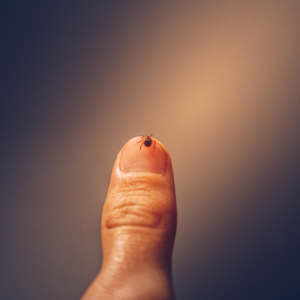*Published in July 2019
Two weeks ago, the New York Times published an article, “My Son Got Lyme Disease. He’s Totally Fine.”
In an attempt to comfort other parents and those concerned about Lyme disease, Apoorva Mandavilli tells the story of her 9-year-old son’s experience with Lyme disease. Mandavilli’s son, Akash, was lucky enough to receive his round of antibiotics and was fine.
The New York Times cited a doctor saying that many view Lyme “as a debilitating, chronic illness instead of what it is: An easily treated infection with no long-term consequences for children, or even the vast majority of adults.”
The New York Times continues to point out that they are not trivializing Lyme, seeing as how antibiotics can cause other problems and Lyme cases are steadily increasing, but the article’s overall message is that you don’t need to panic.
Weeks following this article, (after receiving backlash from members of the Lyme community) the New York Times published “Don’t Minimize the Health Risks of Lyme Disease” containing letters from Officers of the Global Lyme Alliance and a woman incapacitated by Lyme sent to the editor criticizing this past article.
Here is our take on the article and the 3 things the New York Times overlooked regarding Lyme disease:
1) Diagnosing Lyme is no easy endeavor
Lyme diagnosis can take years and misdiagnosis is more common than not. Even Mandavilli admits that her son being diagnosed was the hardest part of the process. Treatment for Lyme disease in an ideal world is simple—but Lyme is anything but ideal. The delayed treatment and sometimes, damaging mistreatment, for Lyme causes many people to continue to suffer in chronic pain.
This kind of misinformation is not helpful to those who may not take Lyme seriously or for those who may give up hope as they suffer with chronic pain and don’t realize that Lyme could be the culprit of their symptoms. There may not be much more chronic Lyme sufferers can do for themselves, but ask any of them, and they will tell you that they wouldn’t wish their experience on anyone. Anything we can do to help people understand how they can get help and how serious of a matter this is, only helps our cause as a Lyme community.
2) Our Lyme stories have been silenced for years
The message of the article is incredibly insensitive to all of the people who are suffering with debilitating chronic Lyme disease or for anyone who has struggled with Lyme and its many symptoms. Imagine suffering with Lyme disease and then to have all of those feelings invalidated in a single headline. It is triggering to see that misinformation in the news. It is heartbreaking when people refuse to listen or understand.
What the New York Times may not understand is that our stories have been silenced for years. Doctors aren’t always helpful, our friends think we are crazy, politicians and leaders do nothing to help us, and we have given up life as we’ve always known it.
3) Misinformation about Lyme does not help our cause
 The Lyme community is never going to get the help it needs if the media continues to perpetuate the false notion that chronic Lyme is not real and that Lyme is simply treated with antibiotics. Think about what this does for all the effort put into spreading awareness during this past May (Lyme Awareness Month).
The Lyme community is never going to get the help it needs if the media continues to perpetuate the false notion that chronic Lyme is not real and that Lyme is simply treated with antibiotics. Think about what this does for all the effort put into spreading awareness during this past May (Lyme Awareness Month).
If we want doctors and lawmakers to understand Lyme disease, we HAVE to promote good information and share the experiences of chronic Lyme sufferers’ reality. This affects money and resources for more research into more accurate testing, vaccinations, and treatment. It also affects how our society will treat those who suffer with chronic Lyme and chronic illness in general.
We know the statements made in the article were supposed to bring comfort to those who have children with Lyme disease who may be worried that their child’s life is forever ruined. While this may temporarily ease some minds, it is not an accurate representation of the reality of Lyme disease.
Ultimately, this does not help the people who are living with chronic Lyme disease, nor does it help anyone who could be exposed to infected ticks. Because Lyme is becoming more and more common, the last thing we want to do is treat it like a casual matter, when prevention will always be the best case scenario.
No, we are not suggesting that people live their lives in fear of getting Lyme disease, but being aware of its seriousness and taking the right precautions could mean everything. And yet, misinformation that is published only makes it harder for our message to be heard.
What did you think of the New York Times article? Let us know if you think the article missed the “bullseye.”


